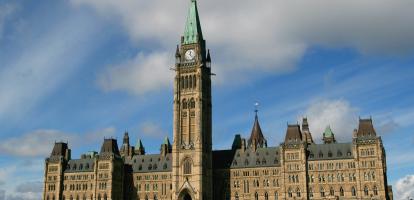Published in the Globe and Mail on July 27, 2015
Daniel Schwanen is vice president of research at the C.D. Howe Institute.
On Tuesday, the trade ministers of 12 countries negotiating the Trans-Pacific Partnership trade agreement will meet in Maui, the first such encounter since the U.S. Congress granted Trade Promotion Authority to President Barack Obama last month.
With this “fast track” authority in its pocket, Mr. Obama’s administration can credibly commit to concluding trade agreements with other countries. It is now quite possible that the negotiations, which Canada joined in 2012, could be completed this year.
The TPP encompasses economies accounting for about 40 per cent of global income. It would provide new access for Canadian producers across the Asia-Pacific region, including Japan, Australia and Vietnam. Canada’s participation would allow our producers to compete on a more level playing field in these markets, where in many cases they are now seriously disadvantaged.
Having recently completed a comprehensive economic and trade agreement with Europe, Canada is poised to gain a strong competitive position as an open trade hub between Asian, U.S. and European markets.
Agriculture, as usual, is a remaining sticking point. Chances are slim that agricultural trade will become fully free among TPP countries, given heavy protections in some agricultural sectors in the United States, Japan and Canada, for example. But every country will be expected to provide greater market access than before. Canada’s main barriers to agricultural trade stem from our supply-management systems for dairy, poultry and eggs, which require putting up huge tariff walls against potential imports. Chances that Canada could join the new, more open trade area, without offering foreign producers greater access to these markets in Canada, are minuscule.
The position on agriculture that Canadian trade negotiators have been asked to defend – that of maintaining Canada’s supply-management systems, a promise from the 2011 Throne Speech – therefore seems to stretch credulity.
Indeed, Canada’s insistence that it will defend supply management from competition risks putting all other sectors at a disadvantage, costing Canadians billions of dollars in lost opportunities every year. This is income that could see its way into the pockets of Canadians at a sorely needed time.
And for what? Many commentators, including those supporting Canada’s participation in the TPP, refer to the more open access to our dairy markets for foreign producers as something we would have to “give up” in the trade negotiations. Yet for most Canadians, “giving up” supply management would be unmitigated good news.
Take dairy, our largest supply-managed sector. At its apex is a mechanism for setting support prices that are set to move along with the cost increases incurred by farmers, regardless of farmers’ potential to reduce those costs over time, and regardless of the cost that must be borne by consumers, restaurateurs or food manufacturers.
Milk producers are required to collectively constrain their output to a level that would maintain the targeted price. And since this constraint on the domestic supply of milk – and hence on dairy products such as cheese – would make no sense if imported products could replace lost Canadian production, Canada also imposes tariff barriers against foreign dairy products that essentially bar them, except for small quantities allowed in under duty-free quotas.
Canadian prices for milk and dairy products are thus much higher than in comparable jurisdictions, hurting low-income consumers the most, but also the many businesses using milk and dairy as inputs and that could grow more if it was not for the system.
The dairy industry itself is hurt in the long run by severely limiting opportunities for new entrants with innovative ideas, and preventing farmers from accessing dairy export markets.
It would be best if Canada committed to abolishing this costly system. This could be done over a long period and be combined with some transitional help for farmers wishing to improve their competitiveness, or exit the business altogether.
There are many other ways to effectively support affected rural areas that would not force consumers and other businesses to pay exorbitant prices for dairy products.
What about that promise to defend supply management? As it turns out, Canada would not even need to get rid of supply management in order to make it more open to competition, including foreign competition – and hence to lower the costs of the system over time. It could simply commit to preventing new support price increases, as long as prices received by Canadian farmers are higher than those in comparable foreign jurisdictions – say, Vermont, Wisconsin or Sweden.
Canadian prices would converge over time with those in comparable international prices, signalling to farmers that they need to become more competitive or risk foreign products entering the country to meet Canadians’ demand – which would likely rise as a result.
There is, therefore, the option of managing the supply, if we truly must because of political commitments, more explicitly with an eye to the needs of consumers and downstream industry.
But what is not realistic is doing nothing about this costly system, especially if it prevents Canada from participating in the TPP.
It’s time to require our dairy producers to compete at the international level, rather than forcing consumers and small businesses to pay through the nose for such a vital product. The government doesn’t even need to break any promises to make it happen.




